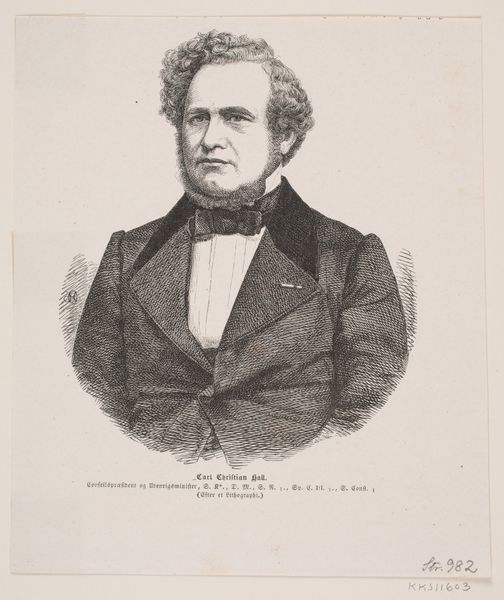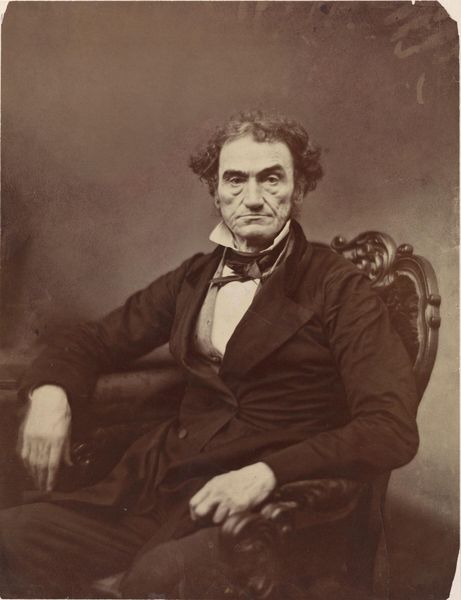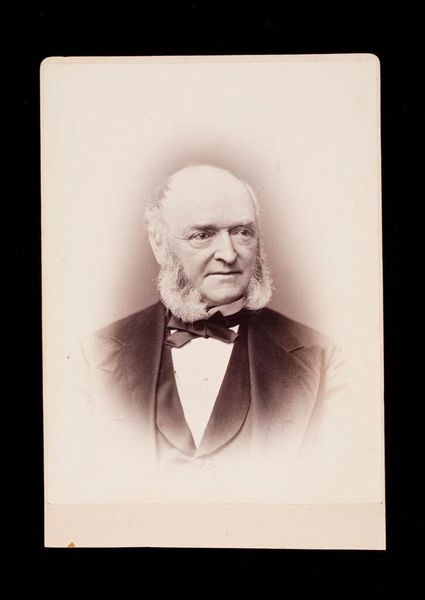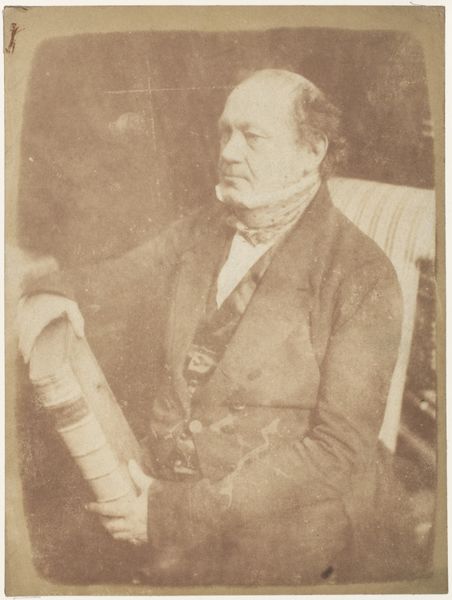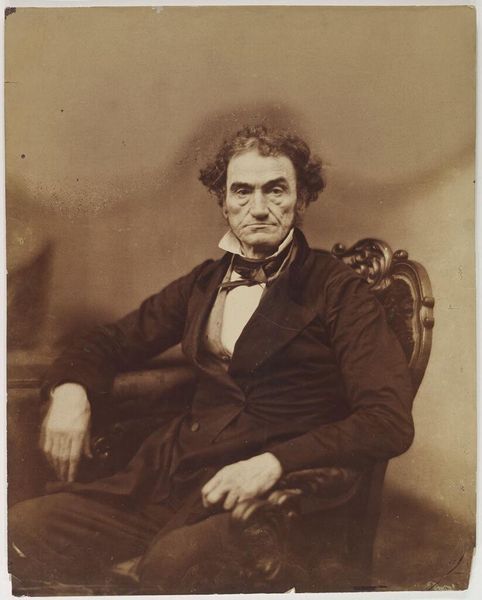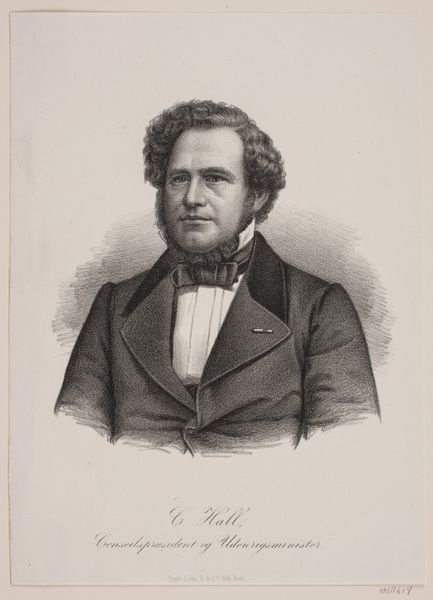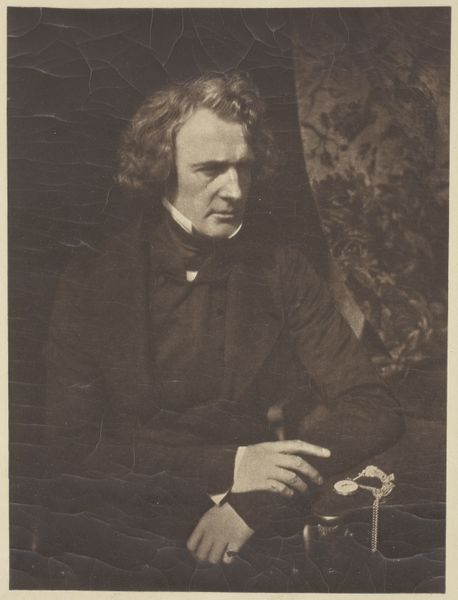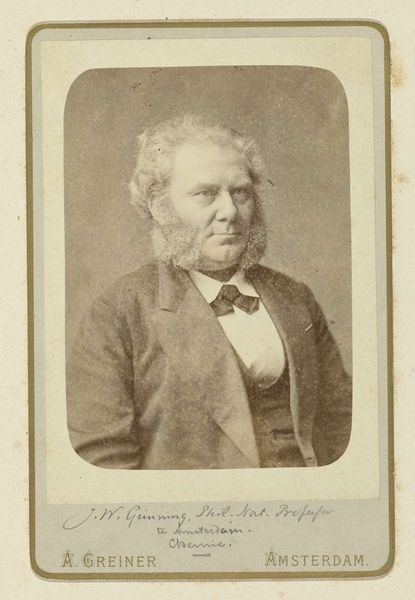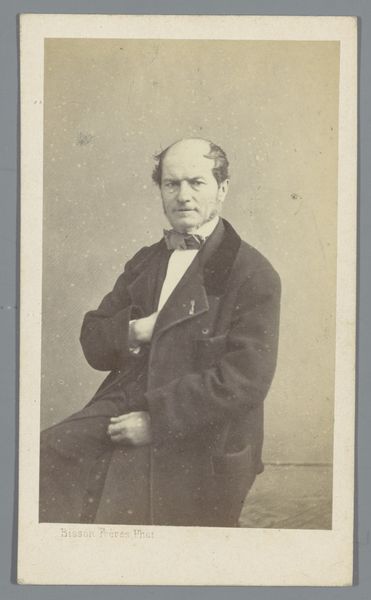
Dimensions: image/sheet: 9.2 × 5.4 cm (3 5/8 × 2 1/8 in.) mount: 10.2 × 6 cm (4 × 2 3/8 in.)
Copyright: National Gallery of Art: CC0 1.0
Curator: Well, that's an interesting image. It’s a daguerreotype portrait of P. T. Barnum, dating back to the 1860s, created by Charles D. Fredricks. Quite the striking image, isn't it? Editor: My first impression? The gaze is captivating. Intense and almost unsettling—he definitely looks like someone with something up his sleeve, or a whole circus of them. Curator: He was quite the character, no? I see someone who defied categorization, who reveled in spectacle, someone whose whole being felt performative. It’s funny how photography at that time was trying to claim its seriousness as an art form. Yet here we have a pure showman memorialized with such… weight. Editor: Exactly! And how do we reconcile this very static medium of the photographic portrait, often meant for posterity, with the fleeting nature of performance, illusion, and even exploitation which were at the very heart of Barnum’s project? He presented so-called “freaks” in the museum. It brings to the forefront uncomfortable discussions about who gets represented, and how. Curator: I feel like this daguerreotype does hold multiple truths, or multiple fictions. The texture of the image, the somewhat drab and muted tones contrast nicely with the extravagance of the bow tie, the chain, even the curls. Editor: It also underscores the democratizing power of photography during this time. It allowed those outside of aristocratic circles access to portraiture—but also reinforced capitalist ambitions, using photography as promotion, spectacle and commerce. It really mirrors Barnum’s own rise, don't you think? From humble beginnings to "Prince of Humbugs". Curator: Hah! Maybe that is exactly what he would’ve wanted – us dissecting his portrait with such intent and finding all sorts of layers beneath the surface. The funny thing is, I keep wondering what he really thought about it. The image—was it him? Or just another carefully crafted illusion? Editor: The bigger illusion may be the one we create about the man himself through a twenty-first century lens. P.T. Barnum – a problematic figure who reflected and exploited the particular social context he inhabited. Thanks for taking a closer look at this image!
Comments
No comments
Be the first to comment and join the conversation on the ultimate creative platform.


